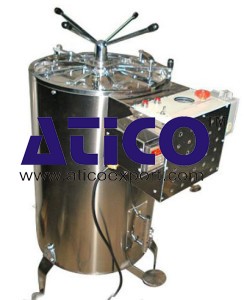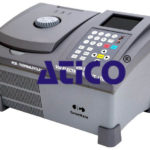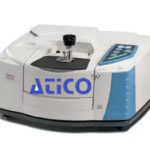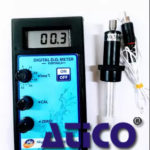Laboratory autoclave manufacturers specialize in creating devices used to sterilize tools and equipment in laboratories, operating at pressures of up to 14 PSI with their sturdy designs. Once an autoclave is full of equipment, it is turned on and allowed to run its cycle until its sterilization indicator darkens, signifying that processing has taken place successfully. Get latest laboratory autoclave price by Atico export and book your order in bulk as well.
Autoclave & Sterilization
Laboratory autoclave manufacturers produce models with various sterilization cycles to meet laboratory needs, from high temperatures designed to kill bacteria quickly to lower temperatures used for sterilizing plasticware and containers that cannot be quickly cooled down.
Gravity displacement sterilization is the most frequently employed process, in which saturated steam fills a chamber until reaching a predetermined temperature and pressure (e.g. 121 degC and 15 pounds per square inch gauge (psig).
Once a sterilization cycle has completed, a valve opens to quickly bring back atmospheric pressure in the chamber. Some models also include an additional feature which expedites this cooling down period to help ensure sterilized goods do not experience extreme temperatures and damage during cooling down periods.
Media Preparation
Due to sterilization processes potentially damaging culture media, preparation procedures must be strictly observed. If using dehydrated commercial formulations as your source, all ingredients must be reconstitute and mixed (if needed) prior to adding pH adjustments as per label specifications; additionally it would be prudent to order sufficient medium to meet normal use needs.
If the medium contains agar, it should be thoroughly soaked and heated prior to sterilization, in order for all the agar crystals to dissolve fully and avoid issues like hardening of the medium that could negatively impact colony growth.
Utilizing a media preparator specifically designed to prepare culture media can drastically cut down the time required for sterilization at temperatures between 121-134degC in an autoclave, thus decreasing damage caused by constant stirring or agitation, while simultaneously increasing efficiency of sterilization equipment process and decreasing frequency of inspection by staff members, thus decreasing risks of contamination or error.
Laboratory Autoclave Hygiene
Laboratory autoclaves must be managed carefully to achieve and sustain a high temperature for an appropriate length of time. Unauthorized use of this equipment can result in physical harm due to contact with its structures, steam burns from excess water or hot liquid spillage when opening and unloading it. Erratic loading, use, and unloading procedures may lead to misidentification of treated and non-treated materials as well as microbial contamination of materials that are safe for autoclaving. Proper identification, packing and handling can help avoid these issues; all lab personnel should receive training on autoclave operations and safety procedures prior to operating their autoclave; additionally they should read through its owner manual regularly in order to maintain optimal maintenance and performance of their autoclave device.
Always wear heat and fluid-resistant gloves, lab coat and goggles when operating an autoclave to avoid potential hazards. In case of an incident requiring cleanup efforts after cooling has taken place, wait for everything to cool before initiating appropriate cleaning, spill cleanup and waste disposal protocols – document all incidents in your laboratory’s autoclave log book.
Laboratory Autoclave Waste Disposal
Laboratory autoclave waste disposal procedures vary according to the materials being processed in it, though it’s typically used to sterilize cultures, pipettes and syringes that have become infected with infectious agents before being safely stored before finally being collected as general trash for disposal.
Effective sterilization requires accurate temperature readings and cycle parameters, with biological indicator ampoules or chemical integrator strips serving as means to verify sterilization. A designated person in the lab is accountable for conducting validations and keeping records.
Operating this instrument requires all personnel to wear rubber aprons, sturdy shoes and asbestos-free heat resistant gloves; laboratory workers may wish to add face shields and eye protection in order to avoid steam burns. Items must be loaded and unloaded carefully since any melting plastic could damage autoclave surfaces and drains; once sterilization has completed, laboratory personnel must record this run in an Autoclave Use Log before disposing it using double bagged biohazard bags and risk management services for collection.
Vertical Laboratory Autoclave
What Is a High Pressure Vertical Autoclave or Steam Sterilizer? A high pressure vertical autoclave (also referred to as top loading autoclave or steam sterilizer) is an industrial machine used for sterilizing equipment and materials, typically by subjecting them to pressurized saturated steam at 121 degrees for an extended period. Commonly found in laboratories for sterilizing materials like medical equipment, lab glassware and surgical instruments as well as liquid media like culture media or food products like canned foods.
For sterilization of culture media, glassware, utensils instruments etc. in steam under pressure. Steam lined construction. Outer body is made of thick mild steel sheet finished with cream enamel painted. Inner chamber is made of thick stainless steel. Lid is made of mild steel lined wit stainless steel & provided with a radial locking systems, worked by a paddle at the . Gasket is of neoprene rubber, hydraulically tested up to 40 psi. The chamber is absolutely leak proof & can be operated at any selected point in between 5 to 20 pound per sq. inch. It is provide with safety valve pressure gauge, pressure release valve, water level indicator with cord & plug. Fitted with automatic cut off device for element for general safety & also fitted with indfoss piezostat.







